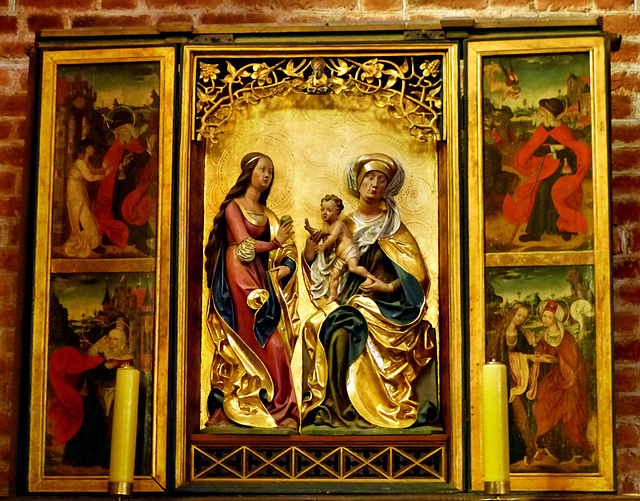Morąg - Kościół św. św. Piotra i Pawła
Olsztyn - Stary Ratusz
Olsztyn - Rynek
Olsztyn - Szlak Św. Jakuba
Olsztyn - Brama Górna
Olsztyn - Bazylika konkatedralna św. Jakuba
Olsztyn - Bazylika konkatedralna św. Jakuba
Olsztyn - Bazylika konkatedralna św. Jakuba
Olsztyn - Bazylika konkatedralna św. Jakuba
Olsztyn - Nicolaus Copernicus
Olsztyn - Zamek Kapituły Warmińskiej
Olsztyn - Zamek Kapituły Warmińskiej
Olsztyn - Zamek Kapituły Warmińskiej
Olsztyn - Zamek Kapituły Warmińskiej
Olsztyn - Muzeum Warmii i Mazur
Olsztyn - Muzeum Warmii i Mazur
Barczewo - Kościół św. Anny
Barczewo - Kościół św. Anny
Barczewo - Ultreia!
Barczewo - Łączy kultury
Kętrzyn - Ptasi Bufet
Kętrzyn
Kętrzyn - Bazylika kolegiacka św. Jerzego
Morąg - Kościół św. św. Piotra i Pawła
Morąg - Kościół św. św. Piotra i Pawła
Morąg - Johann Gottfried Herder
Morąg - Ratusz
Elbląg - Katedra św. Mikołaja
Elbląg - Katedra św. Mikołaja
Elbląg - Katedra św. Mikołaja
Elbląg - Katedra św. Mikołaja
Elbląg - Katedra św. Mikołaja
Elbląg - Katedra św. Mikołaja
Elbląg - Katedra św. Mikołaja
Elbląg
Elbląg
Zamek w Malborku - Marienburg
Zamek w Malborku - Marienburg
Zamek w Malborku - Marienburg
Zamek w Malborku - Marienburg
Zamek w Malborku - Marienburg
Zamek w Malborku - Marienburg
Mokry Dwor - Nassenhuben
Gdańsk
Gdańsk - Kościół św. Jana
Location
Keywords
Authorizations, license
-
Visible by: Everyone -
All rights reserved
-
55 visits
Morąg - Kościół św. św. Piotra i Pawła


The Teutonic Knights probably took over a wooden castle of the Baltic Prussians end of the 13th century. Already at the beginning of the 14th century, the place had developed into an urban settlement. In 1327 Mohrungen was granted the town charter. The knights of the order were followed by peasant treks, one of which, coming from the southern Harz region in Central Germany, settled near the castle of the order.
After the 1410 Battle of Grunwald (Battle of Tanneberg) the town was occupied by the forces of the Grand Duchy of Lithuania and the Kingdom of Poland. In 1440 Mohrungen joined the Prussian Confederation, which opposed the Teutonic Order. The town fought against the Order in the war from 1454 to 1466. Reconquered the town became his seat as deputy Grand Master. After the Torun peace treaty in 1466, the town became a part of Poland as a fief held by the Teutonic Knights.
During the Polish–Teutonic War Morąg was again captured by Poland in 1520 and burned down. Upon the Protestant Reformation and the secularisation of the Order's State in 1525 it became part of Ducal Prussia, remaining a Polish fief until 1657.
The first Early Gothic parish church was built 1305-1312. It was much smaller than the present church and covered only the nave area of the present one. Within the 14th century the building was extended by choir , sacristy and tower. In 1414 the church was the only building in the town to survive the Morąg fire.
From 1525 the church served the Lutherans.
The church was severely damaged end of WWII. It got restored and given to the Catholic community.
After the 1410 Battle of Grunwald (Battle of Tanneberg) the town was occupied by the forces of the Grand Duchy of Lithuania and the Kingdom of Poland. In 1440 Mohrungen joined the Prussian Confederation, which opposed the Teutonic Order. The town fought against the Order in the war from 1454 to 1466. Reconquered the town became his seat as deputy Grand Master. After the Torun peace treaty in 1466, the town became a part of Poland as a fief held by the Teutonic Knights.
During the Polish–Teutonic War Morąg was again captured by Poland in 1520 and burned down. Upon the Protestant Reformation and the secularisation of the Order's State in 1525 it became part of Ducal Prussia, remaining a Polish fief until 1657.
The first Early Gothic parish church was built 1305-1312. It was much smaller than the present church and covered only the nave area of the present one. Within the 14th century the building was extended by choir , sacristy and tower. In 1414 the church was the only building in the town to survive the Morąg fire.
From 1525 the church served the Lutherans.
The church was severely damaged end of WWII. It got restored and given to the Catholic community.
- Keyboard shortcuts:
Jump to top
RSS feed- Latest comments - Subscribe to the comment feeds of this photo
- ipernity © 2007-2024
- Help & Contact
|
Club news
|
About ipernity
|
History |
ipernity Club & Prices |
Guide of good conduct
Donate | Group guidelines | Privacy policy | Terms of use | Statutes | In memoria -
Facebook
Twitter

Sign-in to write a comment.